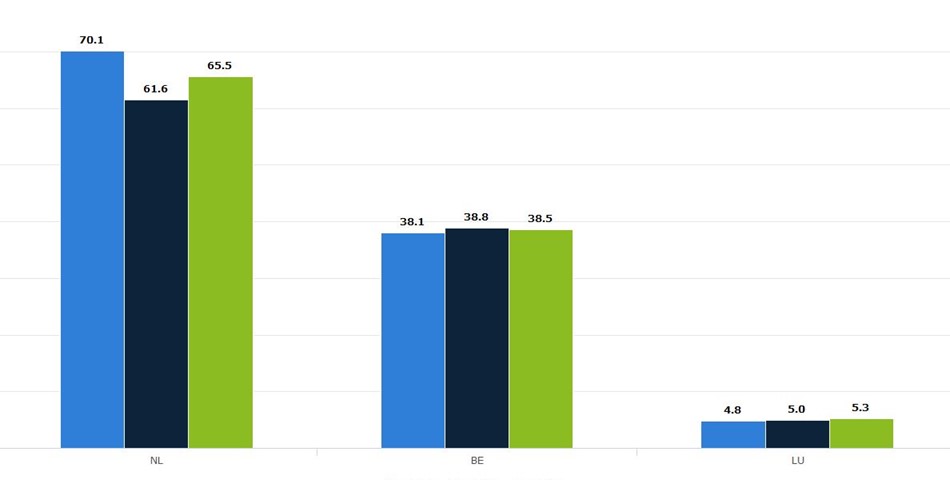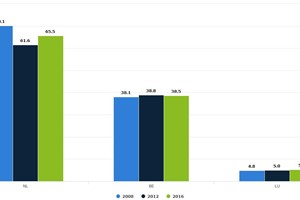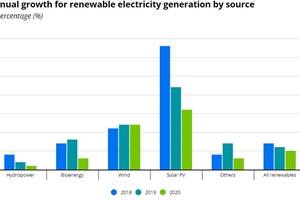While Luxembourg is facing overall growth rates around 3 percent, the economic development is less dynamic in Belgium and the Netherlands. Nonetheless, Luxembourg is not the country with the most dynamic development of building permits for residential and non-residential buildings. Permits for residential buildings have consistently risen in the Netherlands since 2013. With 46.000 dwellings permitted in 2016 and 52.000 dwellings expected to be permitted in 2017, the Dutch numbers for residential buildings are expected to supersede the Belgian numbers. As for non-residential building the permitted area has been higher in the Netherlands than in Belgium for a very long time. In 2013, after a decline in the Dutch building activity, the floor space for the two countries was nearly on the same level. But since then, the permitted floor space saw steeper growth in the Netherlands. In comparison to Belgium and the Netherlands, residential and non-residential building in Luxembourg is rather small with 4.300 dwellings completed in residential buildings and 131.000 m completed in non-residential building in 2016.
For B+L Marktdaten's international analysis of the construction supplier industry, the share of single family and multi-family buildings is an important indicator, which it uses to assess any resulting implications on the construction supplier industry. Due to demographic reasons and urbanization, the share of dwellings permitted in multi-family houses is rising in many European countries. But, once again, the trends in Benelux do not completely correspond with one another. Around 60 percent of all permitted dwellings in Belgium and 78 percent in Luxembourg are multi-family houses. Conversely, in the Netherlands, single family houses are dominating the market with a share of 61 percent. Dwellings permitted in both building types are growing at the same pace in Belgium and the Netherlands. However, in Luxembourg dwellings in multi-family houses are facing a more positive development than those in single family houses.


As expected from comparing the numbers of permits for the three countries, the Netherlands experienced the biggest overall construction investments in 2016 in the sectors of residential building, non-residential building and civil engineering. The calculations shown in Figure 1 include not only new buildings, but also investments in renovations and restorations. With respect to per capita investments, the largest investments are seen in Luxembourg where building costs are much higher than in its neighboring countries. Ultimately, at least one main analogy exists: B+L expects the construction industry to develop positively in all three countries over the next few years. Nonetheless, the differences outlined above have to be considered when discussing construction in Benelux.
Source:












